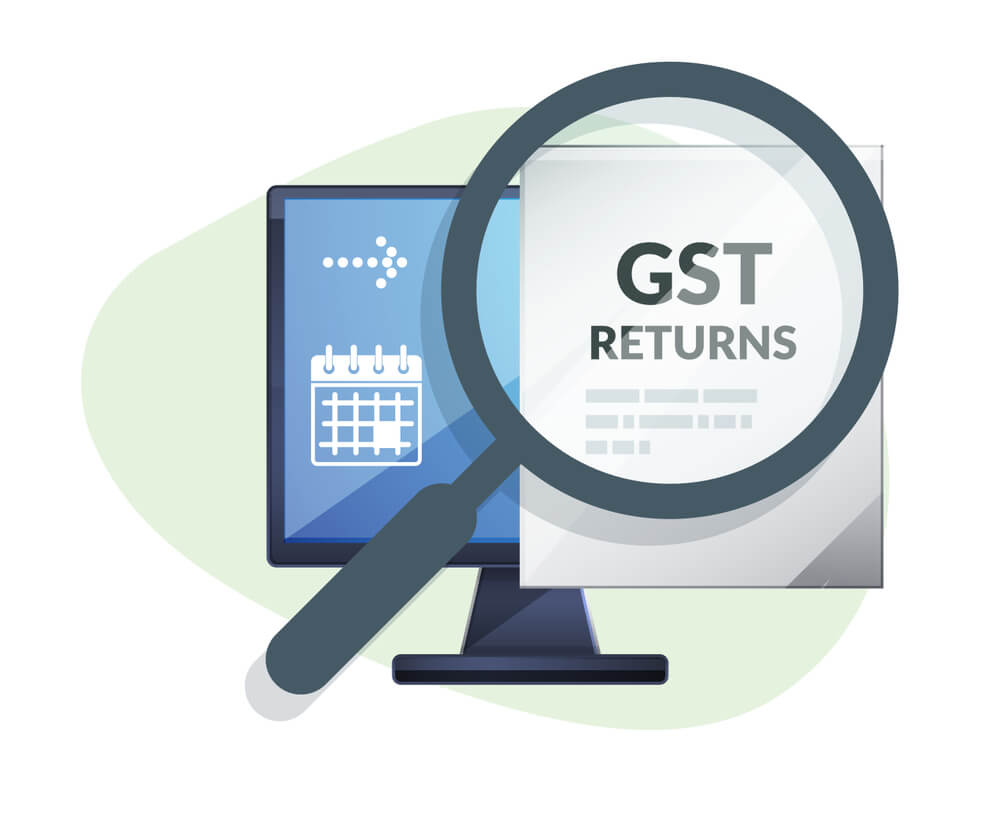A GST return is a document that a taxpayer is required to file with the tax administration, listing all income/sales, expenses/purchases, and so on. Tax liability (Net) is computed by tax authorities using this.
A registered dealer is required to file GST returns that include the following items:
- Sales
- Purchase
- GST Output (On sales)
- Credit for inputs (GST paid on purchases)
The different types of GST return
GSTR-1
GSTR-1, basically, is the form that must be completed to report all supplies (outward) of goods and services.
GSTR-2
GSTR-2 is one of the suspended types of GST (returns) that registered purchasers used to report the inbound supply of services and goods or purchases originating during a tax period.
GSTR-2(A)
GSTR-2(A) is a dynamic GST return that is only viewable by the recipient or buyer of services and goods.
GSTR-2(B)
GSTR-2B is a static, view-only GST return significant to the recipient or buyer of goods and services.
GSTR-3
The GST return ‘GSTR-3’ is presently suspended. It was a summary return that provided summarised information on all supplies (outward) made, supplies (inward) received, and tax credit claims (input), as well as information on tax liabilities and paid taxes.
GSTR-3(B)
GSTR-3(B) is an every month self-declaration that must be filed with the IRS to summarise all supplies (outward) made, tax obligation determined, input tax credits claimed, and taxes paid.
GSTR-4
GSTR-4 is the yearly return that composition taxable people must file under Goods and Services Tax by April 30th of every year.
GSTR-5
GSTR-5, basically, is the return that (non-resident foreign) NRI taxpayers registered for Goods and Services Tax and conducted business in India must file.
GSTR-5A
GSTR-5A is, basically, a summary return used to record GST and outbound taxable supplies due by providers of OIDAR (Online Information and Database Access or Retrieval Services).
GSTR-6
An Input Service Distributor (ISD) is required to file GSTR-6 every month.
GSTR-7
GSTR-7 is a return based every month that anyone obligated to deduct Tax Deducted at Source must file as part of the GST system.
GSTR-8
GSTR-8 is a return based every month that businesses must file based on e-commerce, obligated to collect TDS under the GST (TCS).
GSTR-9
GSTR-9 is a return based on an annual basis that GST-registered taxpayers must file. According to GST rules, it must be submitted by December 31st of every year following the relevant financial year.
GSTR-9A
GSTR-9A is a suspended yearly return that composition taxpayers were previously required to file. It was a compilation of all quarterly returns submitted during that fiscal year.
GSTR-9C
According to the GST rules, all registered taxpayers under GST who have a turnover of more than Rs.2 Cr. in an annual financial year must file GSTR-9C.
GSTR-10
A taxable individual whose registration has been relinquished or cancelled must file GSTR-10. This return must be filed within a speculated time of three months of the cancellation order or cancellation date, whichever comes first.
GSTR-11
GSTR-11 basically returns that individuals who have been issued a (UIN) Unique Identity Number must complete receiving a GST refund for services and goods purchased in India.
To Conclude:
With this article, you learned what GST return is, and the types of GST returns. Following are the different types of GST slabs in India:
- The 5% Tax Slab
- The 12% Tax Slab
- The 18% Tax Slab
- The 28% Luxury GST Slab



